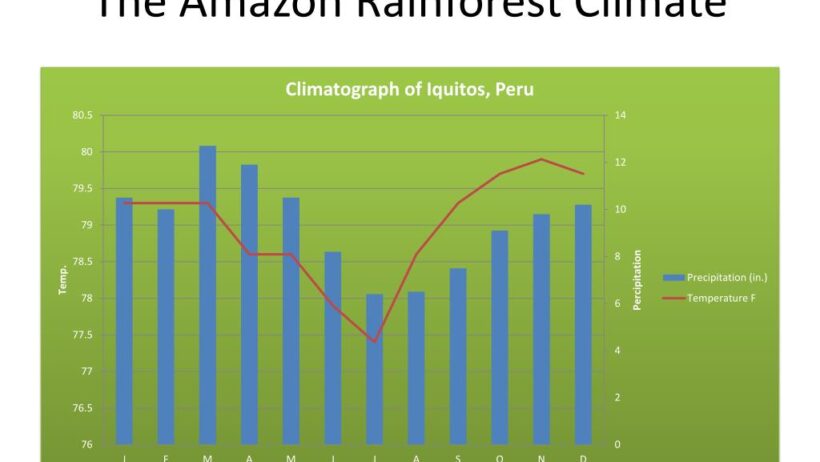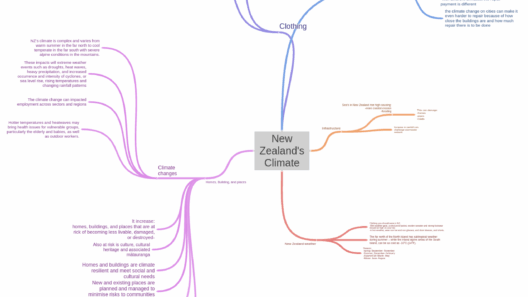The Amazon Rainforest, often termed the “lungs of the planet,” is not just a geographical marvel; it is an ecological cornerstone. This vast expanse, located primarily in Brazil, is home to diverse ecosystems, countless species, and a climate that plays a pivotal role in global weather patterns. Understanding the true nature of its climate is essential for appreciating its significance and the fragility of this biodiverse haven.
To begin with, the Amazon’s climate is characterized by high humidity and substantial precipitation throughout the year. The rainforest typically boasts an equatorial climate, which is defined by consistently warm temperatures and abundant moisture. The average annual temperature hovers around 25 to 27 degrees Celsius (77 to 81 degrees Fahrenheit), with minimal fluctuations between seasons. This thermal consistency is crucial for supporting the myriad of species that thrive within the rainforest.
The rainy season, which spans from December to May, witnesses staggering amounts of rainfall, often exceeding 2,000 millimeters (approximately 79 inches) annually in some regions. Such deluges are fundamental to the maintenance of the rainforest’s complex ecosystems. The torrential rains foster the growth of towering trees and diverse flora, which, in turn, provide habitat and nourishment for countless species, ranging from insects to mammals. As water cascades through the canopy and down to the forest floor, it nurtures a rich tapestry of life.
Upon analyzing the climate patterns of the Amazon, one cannot overlook the seasonal fluctuations that do exist. Although the overall temperatures remain relatively stable, variations occur between the dry and wet seasons. The dry season, occurring from June to November, may see a reduction in rainfall, yet humidity levels remain high. This phenomenon contributes to the unique microclimates found within the rainforest. Specific areas may experience different conditions based on factors like elevation and proximity to rivers, resulting in a complex interplay of ecological niches.
Moreover, the Amazon’s climate is not static; it is subject to external influences that can alter or disrupt its balance. Deforestation, driven largely by agricultural expansion and logging, has significant implications for the rainforest’s climate. Trees play an integral role in the water cycle by absorbing and releasing moisture through transpiration. The removal of trees diminishes this process, leading to altered rainfall patterns, increased temperatures, and, ultimately, adverse consequences for the entire ecosystem. This phenomenon is not just a local issue but poses a serious threat to global climate stability.
Our understanding of the Amazon’s climate extends beyond mere statistics. It’s imperative to discuss the visceral experience of the rainforest environment. The humid air is thick with moisture, enveloping anyone who dares to venture into its depths. The incessant soundscape is filled with the rustle of leaves, the croaks of amphibians, and the calls of countless bird species. This vibrant auditory tapestry is underpinned by the very climate that births these wondrous sounds. As temperatures fluctuate, so too does the rhythmic cadence of life; it is a dance of adaptation and survival.
Furthermore, the Amazon Rainforest acts as a carbon sink, sequestering vast amounts of carbon dioxide and thus playing a pivotal role in mitigating climate change. The intricate balance of the climate maintains the rainforest’s health, which in turn has profound implications for global climate dynamics. Unchecked deforestation threatens this delicate equilibrium. It raises an urgent call to action: the preservation of this iconic rainforest is not merely an environmental concern; it is a necessity for humanity’s survival.
Engagement with the Amazon Rainforest’s climate encourages a deeper appreciation of our interconnectedness with nature. It symbolizes the intricate web of life that, if disturbed, can lead to catastrophic repercussions. Local communities that have coexisted with the rainforest for centuries have intrinsic knowledge of its climate patterns and cycles. Their sustainable practices offer a blueprint for a more harmonious relationship with the environment, reminding us that respect for the natural world is paramount.
Concerning the future of the Amazon, it is essential to foster a sense of urgency toward conservation efforts. Scientific research continues to unveil the complex dynamics of the rainforest climate, but action must follow knowledge. Policies aimed at reducing deforestation, promoting sustainable development, and preserving indigenous rights are fundamental steps toward ensuring the longevity of this ecologically significant biome. Collaboration between governments, organizations, and local communities is essential to safeguard the Amazon’s climate for future generations.
In summation, the climate of the Amazon Rainforest is a multifaceted matrix of interdependent systems, each playing a critical role in the ecological integrity of the region. From its unique thermal characteristics to the impact of human activities, the climate encapsulates a larger narrative about our planet’s health. Preserving this rainforest is essential, not only for the myriad of species it supports but also for the broader ecological balance of our planet. As stewards of the Earth, we must advocate tirelessly for the protection of the Amazon, recognizing it as a vital component of our shared future.








